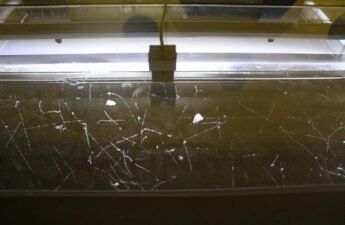The Wilson chamber or cloud chamber is a particle detector, which contributed to important particle physics discoveries.
Category: Instrumentation
Digital voltmeter ammeter: how to use it?
In this post, are shown how it works and how to use the digital voltmeter ammeter. The component I bought is the DE-2645-02.
DURF, the deepest lab in the world
DURF is a laboratory at 2400 meters underground, it started to enter operation this Thursday, December 7th.
Meet the LM3915
The LM3915 is an integrated circuit that uses many operational amplifiers to measure voltage level or audio volume.
Operational amplifier: how does it work?
The operational amplifier, or op-amp, has great utility on electronics. In this post, it’s shown the operation of this integrated circuit (IC).
Fly-by-Wire: what is it?
This post’s subject is an introduction to Fly-by-Wire systems on modern airplanes. It’s shown how it works and the advantages in relation to old systems.
Geiger-Müller counter: how does it work?
This post’s subject is Geiger-Müller counter. An instrument invented in 1908, which identifies radioactive objects and measures ionizing radiation level.
pHmeter: how does it work?
Meeting requests, today’s subject is the operation of pHmeter. An instrument that measures acidity and alkalinity of solutions.
How CCD sensor works?
The CCD is the abbreviation of Charged Couple Device. This light sensor is very used to obtain images in digital cameras, telescopes and smartphones.
Gyroscope: what is it and how does it work?
This post’s subject is the gyroscope. An instrument of great utility for electronic devices and for air, naval, and space navigations.










